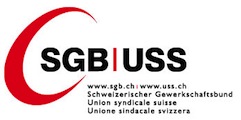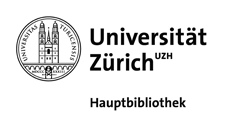Publications des institutions partenaires
Are Securitized Real Estate Returns more Predictable than Stock Returns?
This paper examines whether the predictability of securitized real estate returns differs from that of stock returns. It also provides a cross-country comparison of securitized real estate return predictability. In contrast to most of the literature on this issue, the analysis is not based on a multifactor asset pricing framework as such analyses may bias the results.We use a time...
Institution partenaire
English / 01/01/2010
An invariance property of quadratic forms in random vectors with a selection distribution, with application to sample variogram and covariogram estimators
Institution partenaire
English / 01/01/2010
What explains high unemployment among low-skilled workers? Evidence from 21 OECD countries
Institution partenaire
English / 01/01/2010
Syndication of venture capital investment : the art of resource pooling
Institution partenaire
English / 01/01/2010
Bounded rationality and asset pricing with intermediate consumption
Institution partenaire
English / 01/01/2009
Foreign exchange exposure of U.S. firms and macroeconomic conditions: is there a link?
Institution partenaire
English / 01/01/2009
The role of venture capital firms in Silicon Valley's complex innovation network
Institution partenaire
English / 01/01/2009
Useful heuristics
Decision-making is one of the core tasks in project management. Traditionally, optimization methods have been developed to support managers in finding the best solutions. Alternatively, decisions can be based on simple rules of thumb, or heuristics. Even though simple heuristics only require little in the way of time and information, they have been shown to outperform optimization...
Institution partenaire
English / 01/01/2009
Introduction to the special issue on assortment structure and choice
Institution partenaire
English / 01/01/2009
What moderates the too-much-choice effect?
Core theories in economics, psychology, and marketing suggest that decision makers benefit from having more choice. In contrast, according to the too-much-choice effect, having too many options to choose from may ultimately decrease the motivation to choose and the satisfaction with the chosen option. To reconcile these two positions, we tested whether there are specific conditions...
Institution partenaire
English / 01/01/2009
Cognitive models of choice: comparing decision field theory to the proportional difference model
People often face preferential decisions under risk. To further our understanding of the cognitive processes underlying these preferential choices, two prominent cognitive models, decision field theory (DFT; Busemeyer & Townsend, 1993) and the proportional difference model (PD; González-Vallejo, 2002), were rigorously tested against each other. In two consecutive experiments, the...
Institution partenaire
English / 01/01/2009
Wage inequality and segregation between native and immigrant workers in Switzerland: evidence using matched employee-employer data
We analyze segregation between immigrants and natives at the firm level and explore the connection between segregation and wage inequality in Switzerland.
Institution partenaire
English / 01/01/2009
Labor market reforms, job instability, and the flexibility of the employment relationship
Institution partenaire
English / 01/01/2009
China and India’s challenge to Latin America : opportunity or threat?
Institution partenaire
English / 01/01/2009
On crop biodiversity, risk exposure, and food security in the highland of Ethiopia
Institution partenaire
English / 01/01/2009
Social inequality, local leadership and collective action: an empirical study of forest commons
Institution partenaire
English / 01/01/2009
Has distance died? An update
Contrary to expectations, evidence of a death of distance has eluded numerous estimations in the popular gravity model of trade: estimates of the coefficient of distance are markedly higher in studies with recent data. This column shows that this is only so for the poorer countries who are trading with geographically closer partners. This regionalization of trade for low-income...
Institution partenaire
English / 01/01/2009
The Distance Effect and the Regionalization of the Trade of Low-Income Countries
The “distance effect” measuring the elasticity of trade flows to distance has been to be rising since the early 1970s in a host of studies based on the gravity model, leading observers to call it the “distance puzzle”. We review the evidence and explanations. Using an extensive data set of 124 countries over the period 1970-2005, we confirm the existence of this puzzle and identify...
Institution partenaire
English / 01/01/2009
Redesigning Social Inquiry: Fuzzy Sets and Beyond / Configurational Comparative Methods: Qualitative Comparative Analysis (QCA) and Related Techniques
Institution partenaire
English / 01/01/2009
Pages
Le portail de l'information économique suisse
© 2016 Infonet Economy












